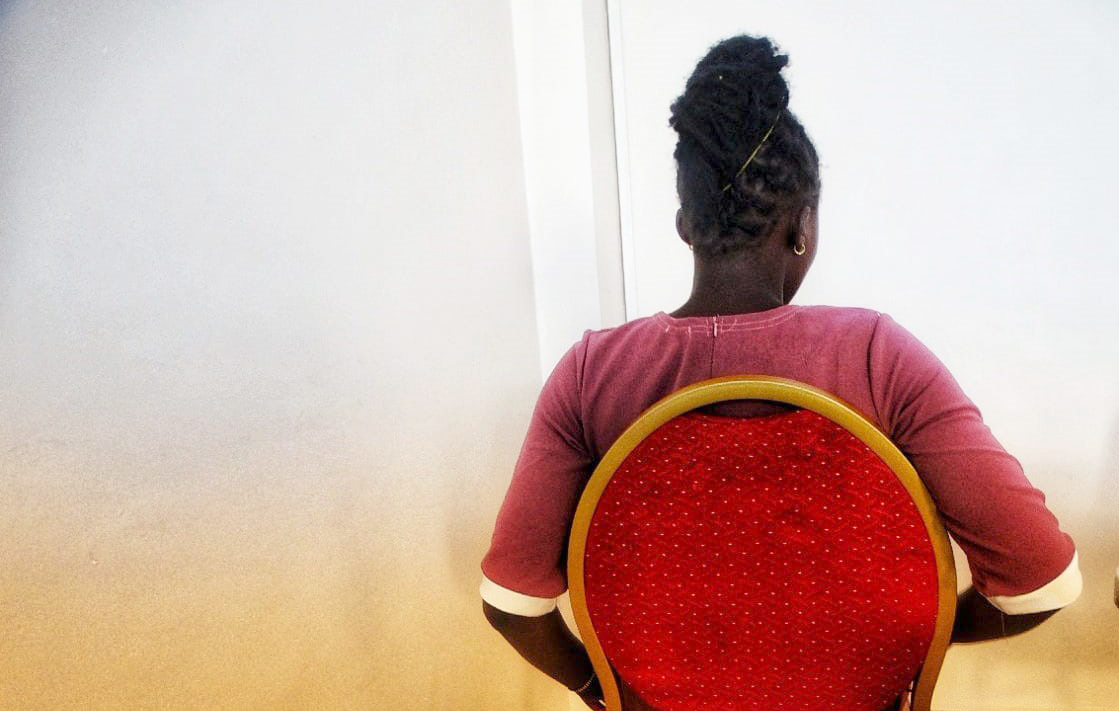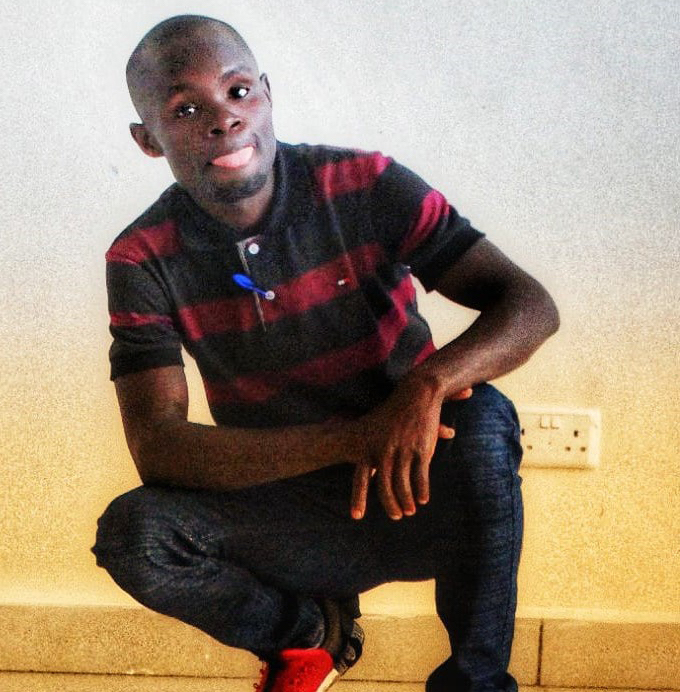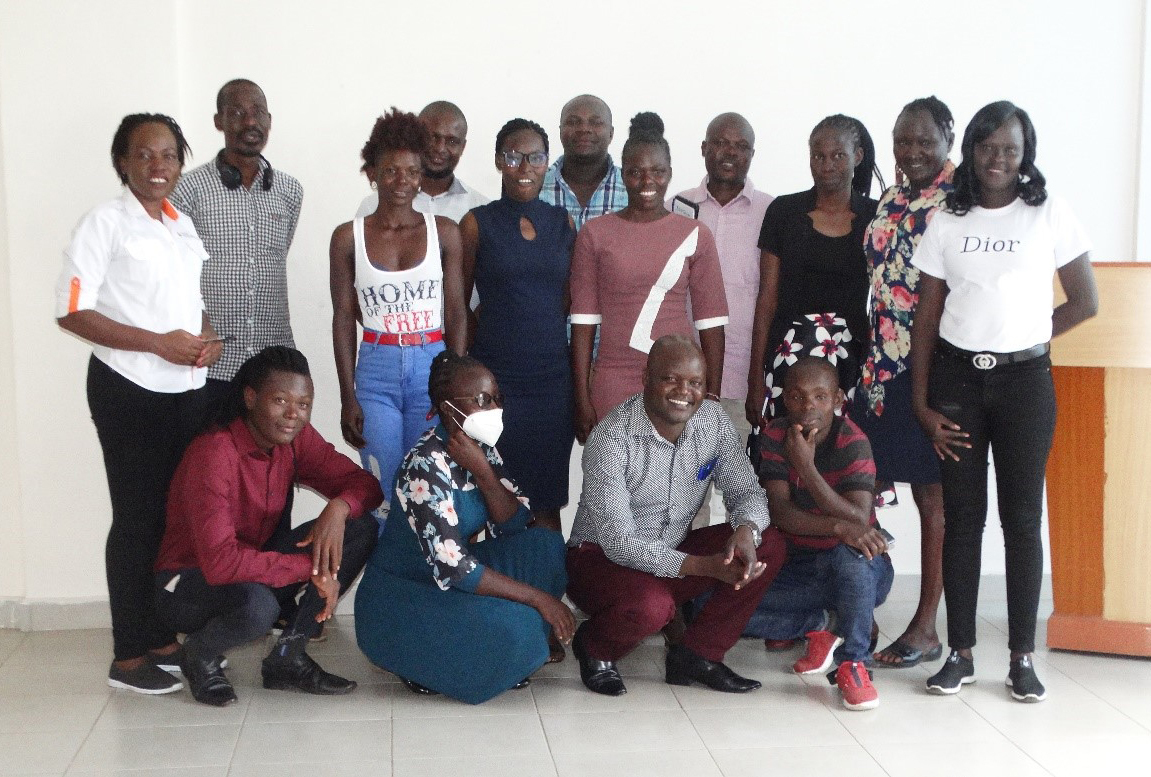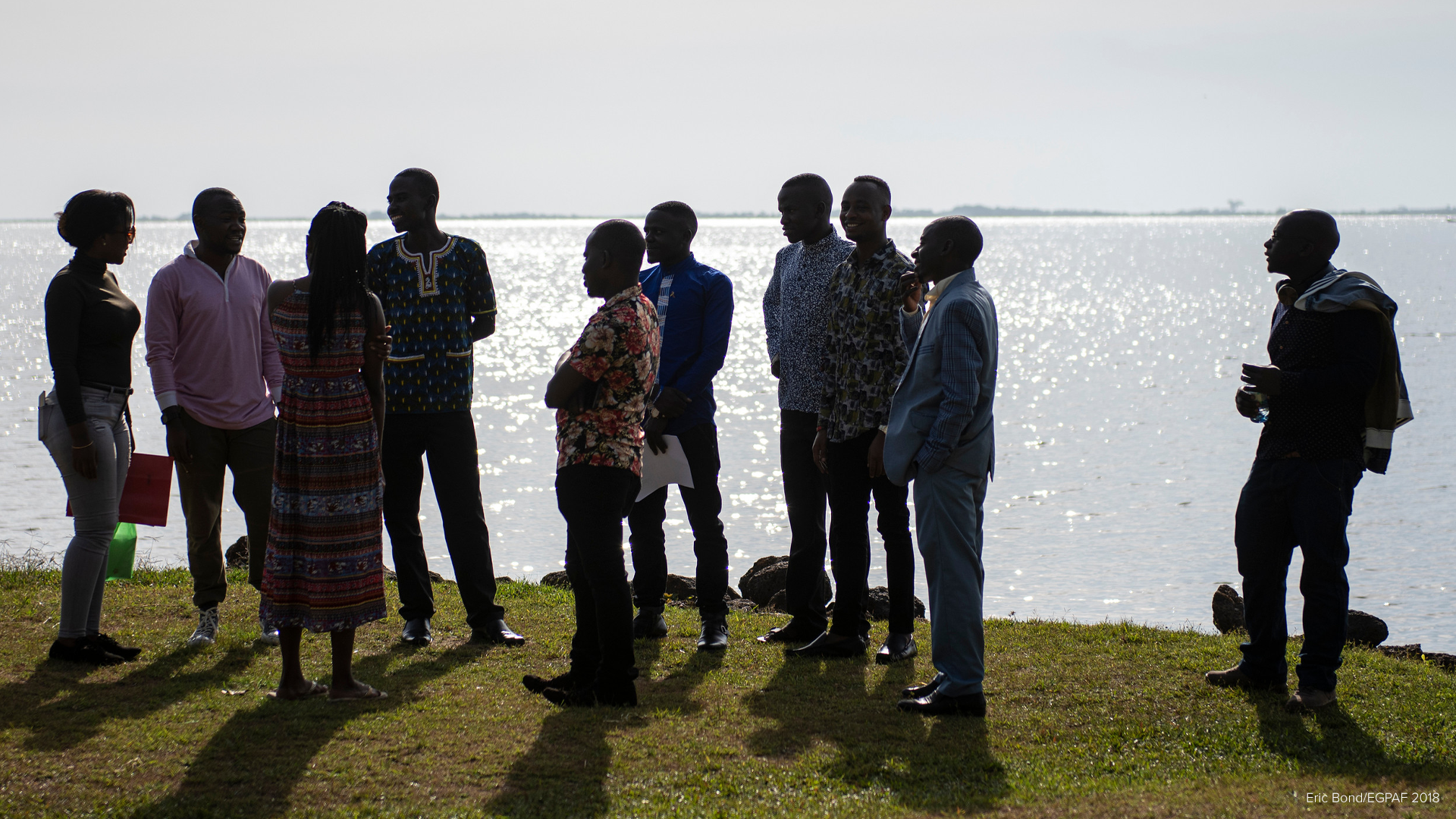
Mary is a sex worker living in Homabay, Kenya. She takes action to remain HIV-free by taking PrEP. She is a peer mentor with the K-PAP project funded by Gilead. Photo by Charity Mureithi/Elizabeth Glaser Pediatric AIDS Foundation, 2022
“I started PrEP very early, and I can confidently say it has saved my life.” Mary,* a sex worker living in Homabay County, Kenya.
PrEP (pre-exposure prophylaxis) in combination with other HIV prevention and treatment interventions—is proven to reduce new HIV infections by over 90% by protecting individuals, like Mary, who are HIV-negative. Mary wants to remain HIV-free, but she knows that she is at risk, having turned to sex work after high school to make ends meet.
“I would sleep with my clients, but I was scared I would contract HIV,” says Mary. “Luckily, I was introduced to a sex workers network group, where I learnt about PrEP. At first, it was a challenge because I could buy one pill at Ksh. 1,000 [about $8.50 USD], but I was later linked to the Drop-in Center (DICE), where I could access it for free. Since 2018, I have adhered to the drug and feel grateful it has saved my life. I have remained HIV-negative to date.”
The PrEP Revolution
PrEP has the potential to substantially reduce HIV incidence among at-risk populations if delivered with sufficient coverage. According to the World Health Organization (WHO), PrEP—in combination with other prevention strategies—could avert more than 1 million new HIV infections worldwide by 2030.
In Kenya, most people with HIV receiving care at different points of care are encouraged to bring their partners for HIV testing, providing a population that would benefit from PrEP, should they test HIV-negative. The 2013 Kenya HIV Prevention Revolution Roadmap set the direction for the introduction of PrEP by proposing high-impact, evidence-based HIV prevention—targeted at the county level with a focus on at-risk populations.
Currently, about 25,000 people are enrolled in PrEP in Kenya. Overall about 280,000 individuals are considered members of key populations. These include sex workers and men who have sex with men. Other priority population groups include people who use injectable drugs, fisherfolk, and truck drivers. Many people who could benefit most from PrEP may face legal and social barriers to accessing health services.
With the support of Gilead, the Elizabeth Glaser Pediatric AIDS Foundation (EGPAF) is reaching out to key populations in Homabay County through the K-PAP project [Key Populations Access to PrEP]. EGPAF offers both facility- and community-based services for key populations. The organization hopes to improve access to PrEP and other new prevention technologies by working with peer champions, by building community partner sites, community advocacy and through direct service delivery.
“Based on my adherence track record, I have also become a peer mentor helping reach fellow sex workers, and educating them about its benefits and adherence,” says Mary. “Thanks to PrEP, I have remained healthy, and I am ready for the next chapter of my life, which is marriage.”
Javanly Atieno, like Mary, is grateful for PReP.
 |
“Having seen what it was able to do for me, I was inspired to reach out to others to also benefit.” |
“As a man who has sex with men, I started noting that after the school breaks my partner and I would often discover we had contracted a sexually transmitted disease,” says Javanly. “I was worried that one day it would be HIV. I sought help from my health care provider who advised me on PrEP and initiated me to it. I talked to my partner about it as he was receptive of the idea, and we were both put on PrEP.
“Having seen what it was able to do for me, I was inspired to reach out to others to also benefit. Our community has to contend with a lot of stigma, and having PrEP has made our lives easier,” adds Javanly, who has also become a peer mentor.
Fighting Stigma and Misinformation

“We need strategies to increase access to [and knowledge about] PrEP as it is a highly effective prevention strategy.”
Among many individuals, PrEP has often been misinterpreted as an antiretroviral drug (ARV), and this has been one of the greatest challenges for the users—because they may be perceived as being HIV-positive, thus putting their partners at risk. In some cases, partner violence has been reported
“I had just gone for my refill,” says Mary. “Then I got a client [and] I took him home. He sent me out to get some liquor. When I got back, he held me at knifepoint. He had ransacked my things and found my pills. He concluded that I had infected him with HIV knowingly. He thought my pills were ARVs, and he was very angry—this is in spite of me having requested that we get a test, and he refused saying he was sure he was negative!“He ended up grazing me with the knife and breaking things in my house,” Mary shares, shaken by the experience. “I was lucky he did not injure me. I have heard cases where people have been beaten senseless or even killed.”
“We need strategies to increase access to [and knowledge about] PrEP as it is a highly effective prevention strategy,” says Javanly.
“We should move towards injectable PrEP to rid partner violence,” adds Mary. “We know PrEP works, but we need to make its use safe and less apparent. Injectable PrEP may be the answer.”
Overall, EGPAF seeks to increase knowledge of and demand for PrEP services, increase community engagement, build the capacity of health care workers, and make health facilities more friendly to key populations. This pioneer program, K-PAP, aims to create a model that can be scaled up across Kenya.
* not her real name
Mary, a sex worker and peer mentor in the K-PAP project, Homabay
Javanly Otieno a peer mentor under the K-PAP project
Job Akuno, Technical Lead and Project Manager for Adolescent Sexual Reproductive Health and HIV EGPAF, making a presentation during a quarterly planning meeting
K-PAP project implementors during a project planning meeting in Homabay County



